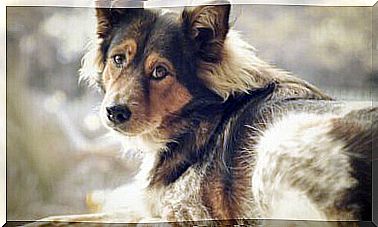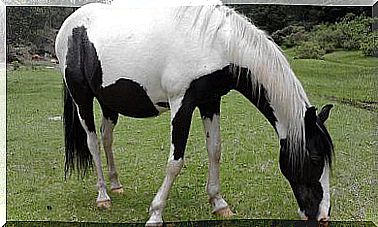Dragons: Legend Or Reality? Let’s Find Out Together
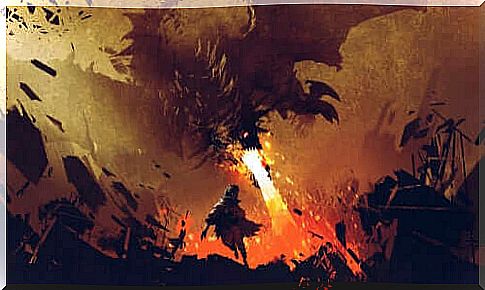
Dragons are the protagonists of some of the most imaginative legends belonging to the traditions of oriental cultures, especially of ancient China.
For some people, these incredible stories are nothing more than legends created for the purpose of impressing and educating the population. Nevertheless, there are those who defend the veracity of some reports that would prove the existence of dragons.
Of course, this is a complex subject that should be carefully analyzed. In this article, however, we will try to illustrate some arguments that indicate the possibility that dragons were (or, who knows, that they are still) real.
Coincidences present in the tales about the appearance of dragons
One of the most interesting evidences of the possible existence of dragons is represented by the stories concerning their appearance. Beyond the cultural differences existing between the various eastern and western countries, it is possible to observe some coincidences regarding the morphological characteristics of these creatures.
In general, dragons are described as huge animals with a reptilian-like appearance, due to their bodies covered with tough scales. Nonetheless, their folding wings would be similar to those of bats, formed by rigid (finger-like) structures joined by membranes.
Even in the West, dragons are traditionally portrayed as having legs suitable for flight and visibly webbed. These mythological animals, however, in Eastern cultures look more like a viper: they do not necessarily have legs or wings, but they are able to master magical arts that allow them to fly.
Regarding their behavior, dragons would be independent creatures who would follow a mostly solitary lifestyle. During the flight, these beings would reveal a great elegance and agility, despite the size and robustness that characterize them.
The disputed ability of dragons to emit flames
Another characteristic feature of dragons in Western culture is their ability to emit or “spit” flames from their mouths. Although there are numerous hypotheses regarding this issue, the most accepted one claims that this ability derives from a biological mechanism that would allow dragons to store methane gas within their organisms.
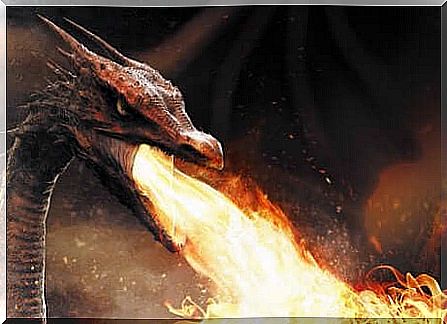
The flames emitted would be the result of the combination of methane gas with the sparks produced by the rubbing of the dragons ‘ teeth. Other hypotheses, on the other hand, indicate a possible ability to generate electric currents or sparks starting from their nervous system or from another mechanism present in their body.
However, in Eastern cultures, dragons are not usually described as creatures that emit flames. Their powers are more related to some kind of magic or divine power, rather than their strength or physical characteristics.
Differences in interpretation between the western and eastern world
In most Western legends, dragons are described as fearsome and unsociable creatures ; in these cases, interactions with human beings would always occur in contexts of struggle or wars.
Their symbolism in Western culture is divided into an eternal dualism between the figure of the guardian and that of the devourer. Their protective side towards some men condemns many to an inevitable fate of death in their mystical fire.
In turn, in Chinese culture and, in general, in Eastern culture, the overall figure of the dragon is interpreted as a positive symbol of luck. His image is considered a divine representation, which would unite the celestial power with the terrestrial force. In this way, it would be a kind of bridge between the divine and the mortal world.
In both cases, dragons are attributed mystical characteristics that are always associated with supernatural or divine power. To the point that it often happens to see their image present on the coats of arms of noble or royal families, or even today: they represent the relationship that unites their members with the universal order and divine power.
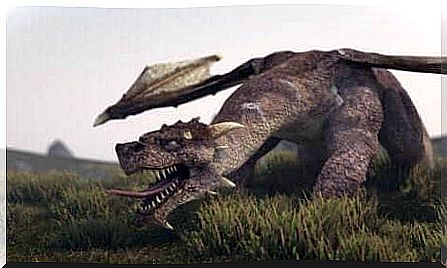
Official documents and dragon sightings
Another possible proof of the existence of dragons can be found in some official documents that seem to confirm the sightings, which took place mainly in China. In some of these tales, experiences of close contact with these creatures are even described in detail.
The earliest documents were produced during the rule of the Qing dynasty, around 1,800 BC. These texts tell of a small dragon ( loong ) that would have fallen into the Leting County river. The creature would have been injured and, on this occasion, would have been treated by the local community.
A similar story is the one that is told in a document produced during the Southern Sung dynasty. Another small dragon would have been found on the shore of Lake Tabai, around the middle of 1162 BC. Again, the loong would have been rescued and cared for by the local population, only to disappear once healing was achieved.
Turning to modern history, there is a document dated to 1944 that refers to the fall of a sort of black dragon in Fuyu County. According to the main witness, named Yen Dianyuan, the creature measured about seven meters in length and its appearance was similar to that of a large viper with four legs.
The face of the animal described by Dianyuan, as well as the characteristics of its body, were very similar to the drawings depicting the loongs found in ancient Chinese documents.
These tales are just some of the clues that may lead us to wonder if dragons are really just legendary creatures or if, instead, they may have lived (who knows, still surviving today) somewhere in our vast universe.


